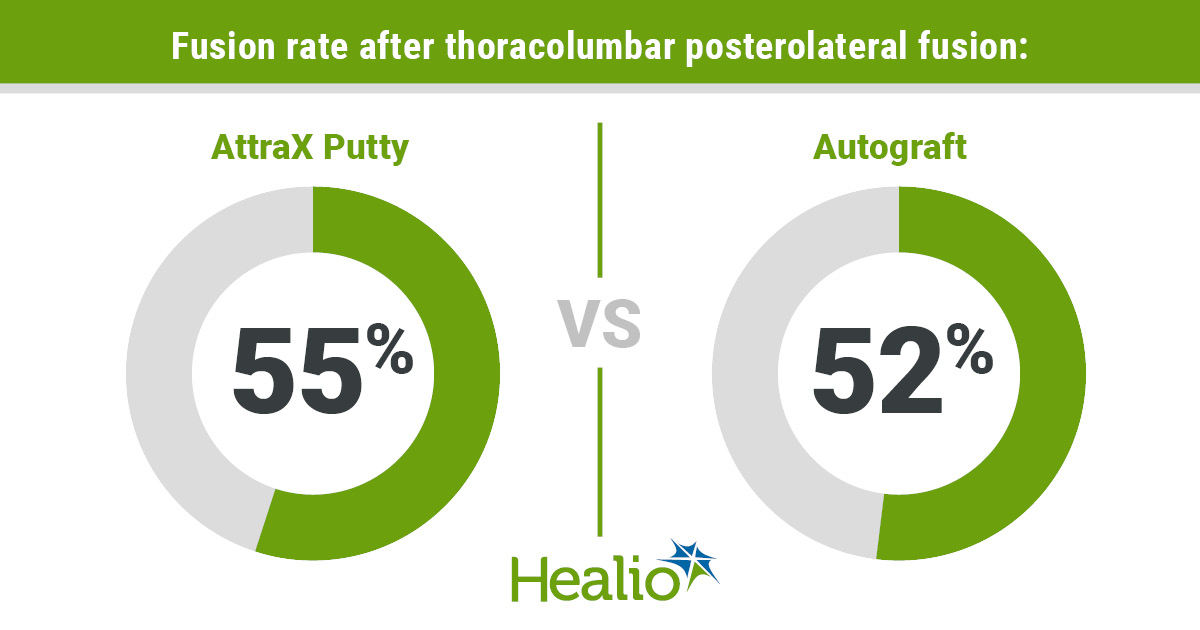Promising results found for biphasic calcium-phosphate as a bone graft substitute in spine fusion
Use of biphasic calcium-phosphate was a successful substitute as a standalone bone graft for autograft in instrumented posterolateral fusion of the thoracolumbar spine, according the results of a non-inferiority trial.
A. Mechteld Lehr, MSc, and colleagues at the Dutch Clinical Spine Research Group tested the efficacy of NuVasive’s AttraX Putty, a material with limited clinical evidence, the authors wrote.
For the 100 patients tested (49 men and 51 women, mean age of 55.4±12 years), the microporous synthetic ceramic was placed on a randomized side, with autograft applied to the contralateral side of the fusion trajectory, according to the abstract. This way, each patient could serve as his/her own control.
At 1-year follow-up, posterolateral fusion (PLF) was assessed and scored as either “fused, doubtful fusion or non-union,” the researchers wrote. “After correction for multilevel fusions, resulting in a single score per side, the fusion performance of AttraX Putty was tested with a non-inferiority margin of 15% using a 90% confidence interval (CI).”

Resulting data from the primary analysis indicated positive results for the biphasic calcium-phosphate substitute in instrumented PLF.
“The fusion rate of AttraX Putty was 55% vs. 52% at the autograft side, with an overall fusion rate of 71%. The 90% CI around the difference in fusion performance excluded the non-inferiority margin (difference=2.3%, 90% CI=-9.1% to +13.7%),” according to the study. – by Max R. Wursta
Disclosures: The authors reported that they received funds from NuVasive Inc. in support of this work and received grants outside the submitted work.
